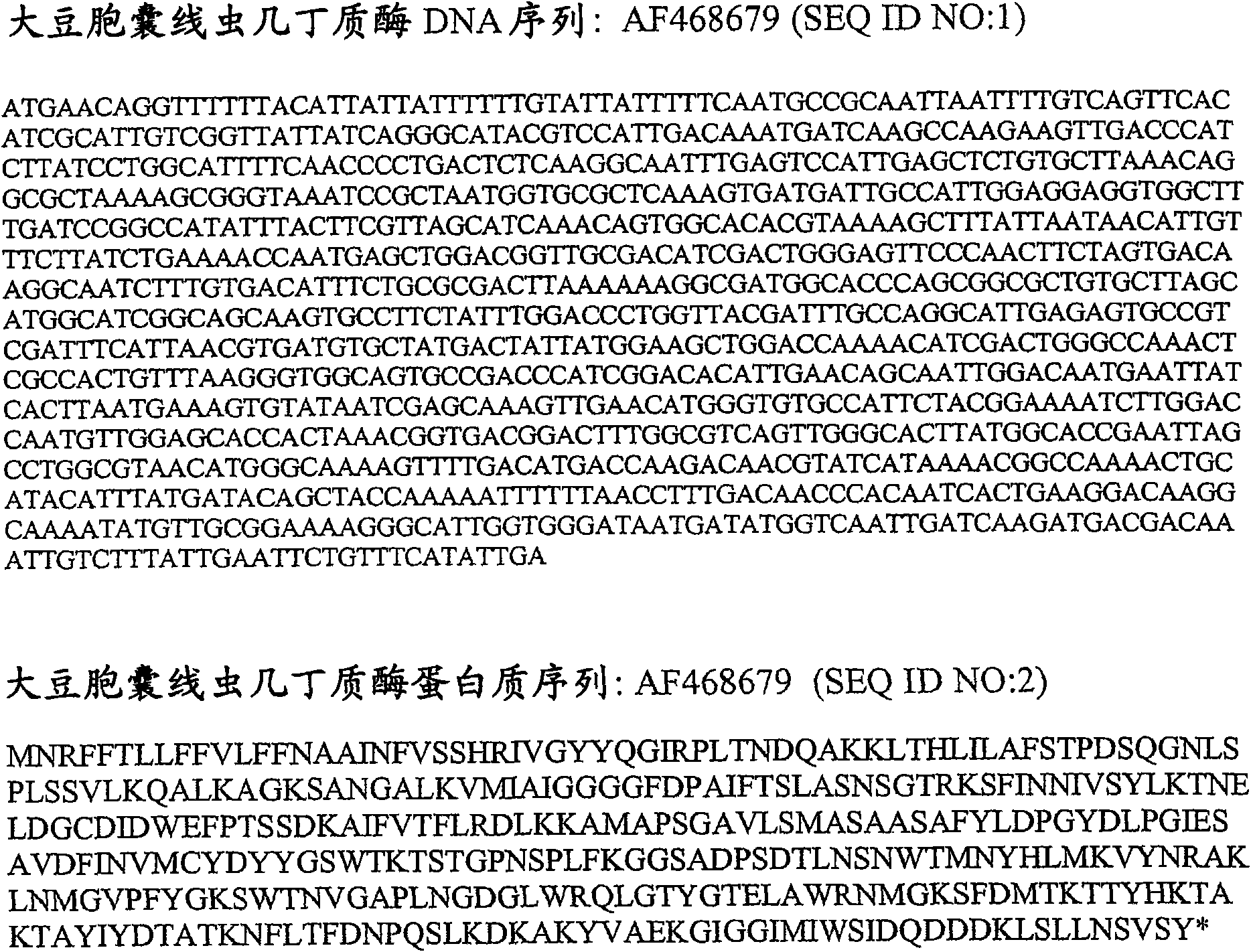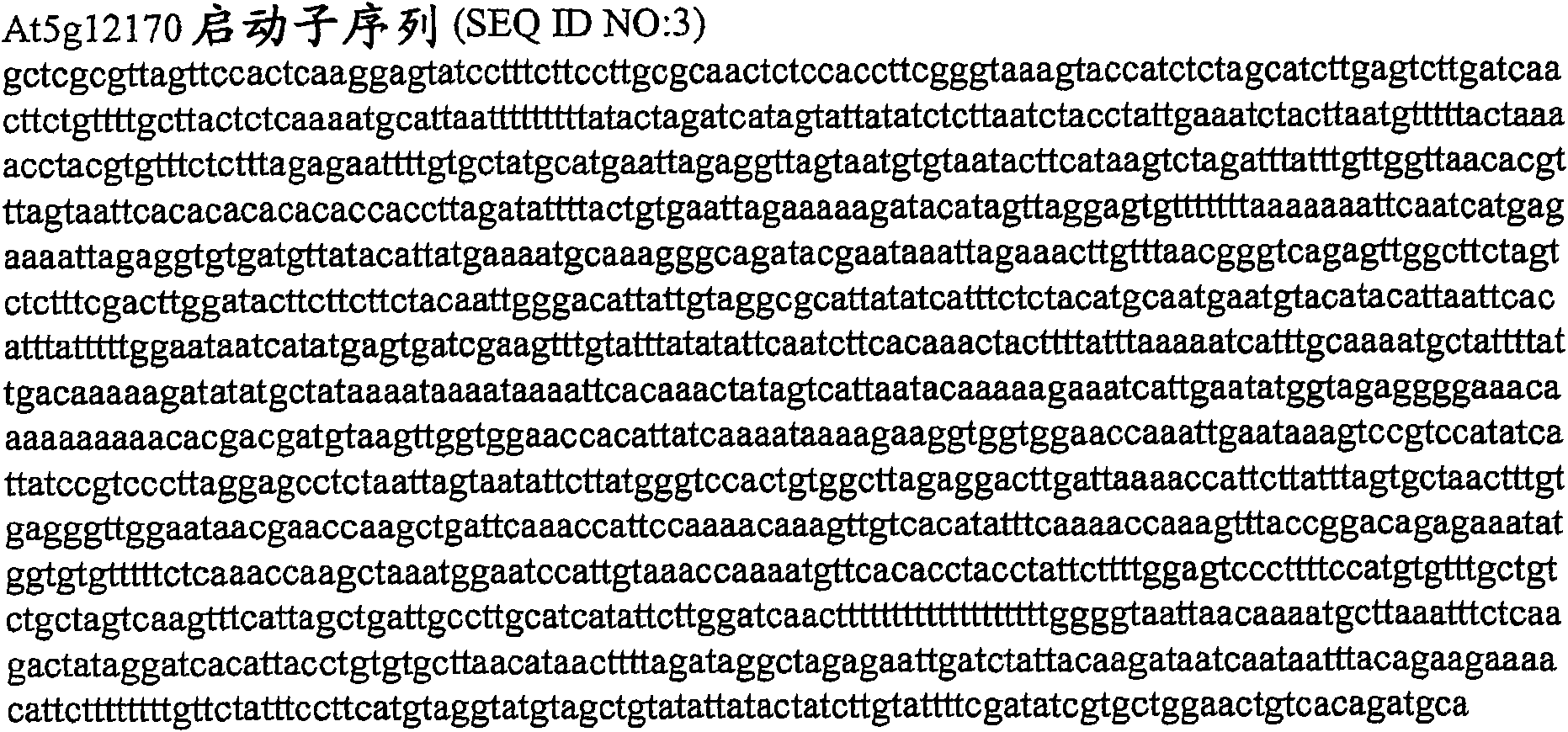Use of nematode chitinase genes to control plant parasitic nematodes
A technology of chitinase and transgenic plants, applied in the field of control of soybean cyst nematodes, can solve problems such as yield loss
- Summary
- Abstract
- Description
- Claims
- Application Information
AI Technical Summary
Problems solved by technology
Method used
Image
Examples
Embodiment 1
[0087] Example 1: Cloning of a gene encoding chitinase from soybean cyst nematode
[0088] The chitinase gene for transformation of soybean was generated by de novo synthesis and then cloned into a minimal vector containing the promoter described below. The DNA sequence of the soybean cyst nematode chitinase was obtained from Genbank accession number AF468679.
Embodiment 2
[0089] Example 2: Vector constructs for transformation
[0090] To assess the function of the cloned chitinase-encoding gene, a gene fragment corresponding to the polynucleotide of SEQ ID NO: 1 was cloned downstream of the promoter to generate the expression vectors described in Table 1. Syncytium-preferred promoters include Arabidopsis pAt5g12170 promoter SEQ ID NO: 3 (US provisional application 60 / 899,693 and PCT / EP2008 / 051329), Arabidopsis TPP 6-phosphate trehalose phosphatase promoter SEQ ID NO: 4 (pAt1g35910) (US provisional application 60 / 874,375 and PCT / EP2007 / 063761). A constitutive Super-promoter (U.S. 5,955,646) was also operably linked to the nematode chitinase polynucleotide of SEQ ID NO:1. The plant selectable marker in the vector was the mutant acetohydroxyacid synthase (AHAS) gene from Arabidopsis conferring tolerance to the herbicide ARSENAL (imazapyr, BASF Corporation, Florham Park, NJ). The mutated selectable marker AHAS gene is driven by the Arabidopsis AH...
Embodiment 3
[0093] Embodiment 3: the preparation of transgenic root and nematode bioassay
[0094] Detection of nematode resistance using a proprietary root explant assay. This assay can be found in commonly owned co-pending application USSN 12 / 001,234, incorporated herein by reference and as described below.
[0095] Clean soybean seeds from soybean cultivars were surface sterilized and then germinated 7 days before Agrobacterium inoculation. The cotyledons were excised for transformation. Immediately after excising the explants from the seedlings, the cut ends were dipped into colonies of Agrobacterium rhizogenes containing the different vector constructs described above. The explants were co-cultured on 1% agar in petri dishes for 6 days. After transformation and co-cultivation, soybean explants are transferred to root induction medium with selection agent.
[0096] Two to three weeks after root induction, the elongated roots were removed and the root explants were transferred to a...
PUM
 Login to View More
Login to View More Abstract
Description
Claims
Application Information
 Login to View More
Login to View More - R&D
- Intellectual Property
- Life Sciences
- Materials
- Tech Scout
- Unparalleled Data Quality
- Higher Quality Content
- 60% Fewer Hallucinations
Browse by: Latest US Patents, China's latest patents, Technical Efficacy Thesaurus, Application Domain, Technology Topic, Popular Technical Reports.
© 2025 PatSnap. All rights reserved.Legal|Privacy policy|Modern Slavery Act Transparency Statement|Sitemap|About US| Contact US: help@patsnap.com



